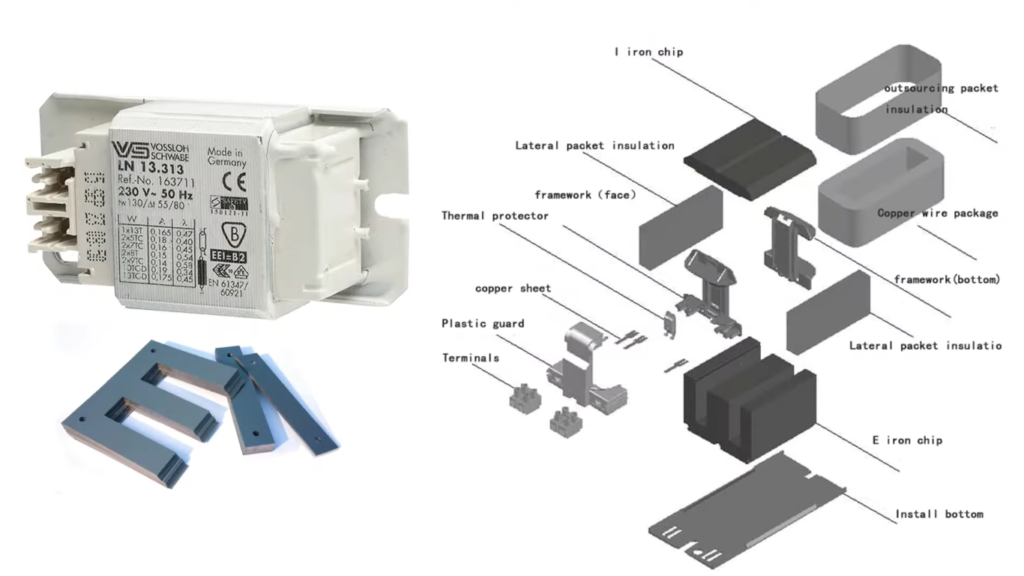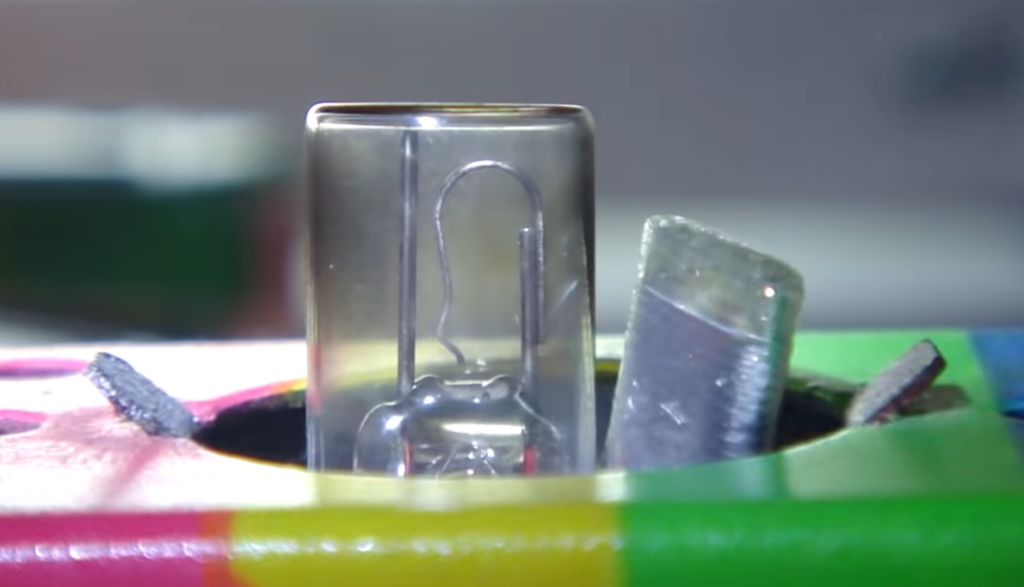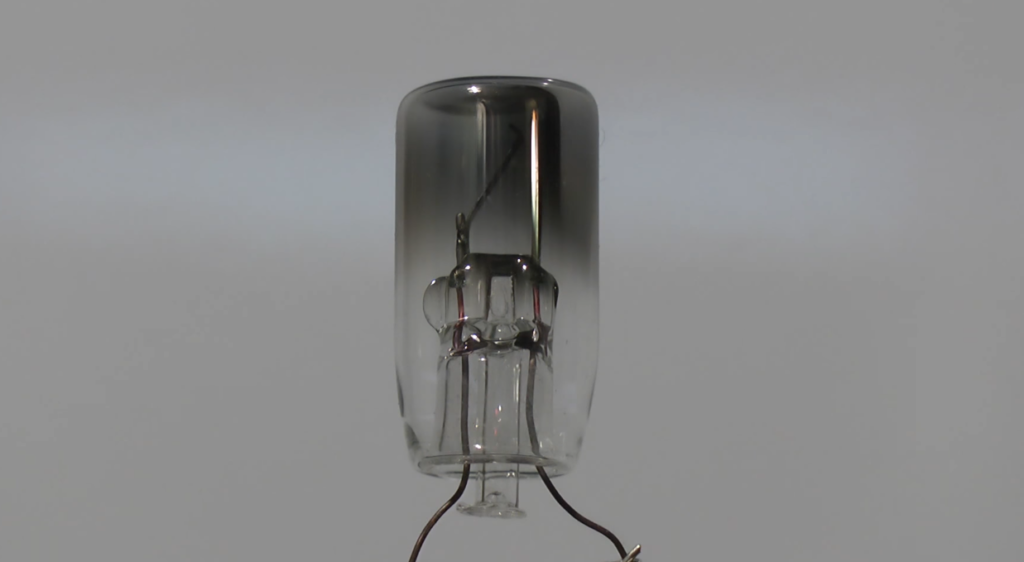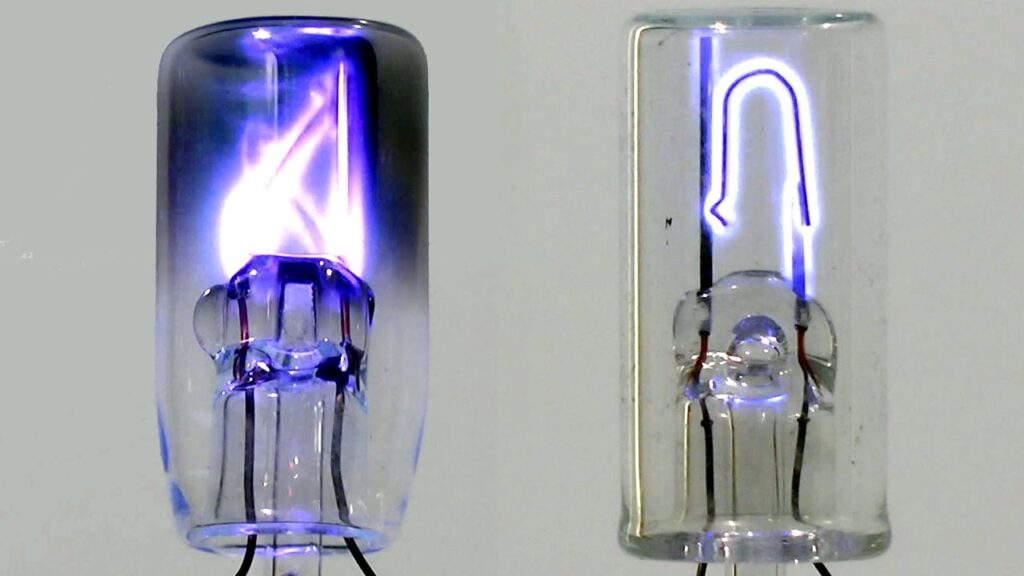Do you ever find yourself wondering how certain fixtures in your home remain lit? How do they stay so reliably illuminated while still staying relatively cool to the touch? The answer lies with an electrical ballast. Electrical ballasts are found in a variety of light fixtures, from commercial offices to residential homes, and serve as an essential part of lighting systems. Ballasts are responsible for regulating the flow of electricity within a circuit, which helps provide a consistent level of illumination and avoid potential damage or overloads. Here we’ll explore what an electrical ballast is and why it’s important for lighting safety!
What Is an Electrical Ballast?

Electrical ballasts are available in both standard models for residential or commercial use, as well as more specialized models with extra features or higher performance capabilities. Different types of lamps will require different types of ballast, so be sure to check with your local hardware store before purchasing one. With proper maintenance and care, an electrical ballast can last for many years and provide safe operation of your lighting system.
Whether you’re replacing a faulty ballast or installing a new one, make sure that you use the correct type and size for your lamp. Using the wrong electrical ballast can cause damage to your lighting system or even create hazardous conditions. Always follow manufacturer instructions when installing an electrical ballast, and if you have any questions, consult a professional electrician for advice. [1]
How Does an Electrical Ballast Work?
An electrical ballast works by controlling the current flow through an electrical circuit. It does this by providing a specific amount of resistance to the circuit, helping stabilize the voltage and power levels, which in turn helps regulate the speed and intensity of lighting throughout a given space.
An electronic ballast is especially useful for lights that require relatively high voltages like fluorescent lamps or HID lamps. Without such regulation, both types of lamps could be subject to frequent flickering or dimming due to high voltage variations. The current controlled by the ballast also helps keep the light from burning out too quickly because it reduces stress on its components caused by overvoltage or excessive current. Ballasts are designed specifically for different types of lights including fluorescent, metal halide, and high pressure sodium lamps. They come in both analog and digital options, depending on the customer’s needs. The right ballast can ensure a prolonged life for your lighting system and reduce the need to replace bulbs frequently.
In addition to controlling current flow, electrical ballasts also provide certain safety features like short circuit protection and overload protection. This helps prevent any potential damages caused by sudden voltage changes or unexpected power surges in the circuit. It is crucial that you use the appropriate type of ballast for any given lamp as too much or too little resistance can result in loss of light output or even catastrophic failure of components within the fixture itself. With so many different types of lamps out there, it is important to research which one would be best suited for your needs.
With the right ballast, you can rest assured that your lighting system will stay efficient and safe for many years to come.

Types of Electrical Ballasts
Electrical ballasts come in a variety of types and sizes, each designed for specific applications. Some common electrical ballast types include:
Magnetic Ballasts – These are the most commonly used type of ballast. They work by using a magnetic field to resist changes in current flow. The main advantage of this type is that they are relatively inexpensive and reliable.
Electronic Ballasts – These use electronic components to limit the flow of electricity and provide stable light output over time. They offer higher efficiency than traditional magnetic ballasts, but they also tend to be more expensive. [2]
High-Intensity Discharge (HID) Ballasts – HID ballasts are specifically designed for use with high-intensity discharge lamps, such as metal halide and mercury vapor. They are typically designed with multiple outputs to reduce voltage fluctuations and ensure consistent light output.
No matter which type you choose, it’s important that the electrical ballast is properly sized and compatible with the lighting fixture or lamp that it will be powering. This ensures proper operation and optimal performance from your lights.
Benefits and Considerations of Using an Electrical Ballast
Using an electrical ballast can be beneficial in a variety of ways. For instance, it allows you to save energy and reduce the amount of electricity needed to light up bulbs. Additionally, it helps prevent the lamps from burning out quickly due to over-voltage or excessive heat. Furthermore, a ballast helps create a consistent level of power supply so that your lights remain at their brightest levels throughout its lifespan.
However, there are certain considerations you must take into account when using a ballast. It is important to choose the right type for the specific lighting application because each has different capabilities and features. Moreover, selecting compatible components such as lamps and capacitors is essential for optimal performance.

Lastly, remember that proper installation is key to ensuring the ballast works correctly. This includes following manufacturer instructions and safety guidelines in order to avoid any potential hazards.
Using an electrical ballast can be beneficial for a variety of applications, but it is important to make sure you choose the right components and adhere to all safety requirements when installing it. Doing so will help ensure your lights remain at their brightest levels throughout their lifespan.
Disadvantages of Using an Electronic Ballast
Despite the benefits of using an electronic ballast, there are some disadvantages associated with it. The cost to purchase and install an electronic ballast is often higher than that of a conventional starter-based system. Additionally, they can be sensitive to temperature and humidity changes as well as require more frequent maintenance. Finally, some models may not be compatible with other lighting products. [3]
On balance, many people find the advantages outweigh the negatives when it comes to using an electrical ballast in their lighting applications. It’s important to weigh the pros and cons before making your decision in order to ensure you’re getting the right product for your needs.
By taking into account factors such as installation costs, compatibility requirements, and potential drawbacks, you can ensure that you make the most of using an electrical ballast for your lighting needs.
How to Use an Electrical Ballast?
Using an electrical ballast is relatively straightforward. However, you should always make sure to follow the manufacturer’s instructions before attempting to install or use any device.
Read and understand the safety guidelines provided by the manufacturer. Make sure that all power supplies are off before handling any of the parts or components of your electrical ballast. Wear appropriate safety gear if necessary, such as insulated gloves when dealing with high-voltage wiring.
Check all parts for damage and replace any defective components before proceeding with installation or use. Also, make sure that you have all the required parts and tools needed to complete your project/task.

Install the electrical ballast according to its instructions. Depending on the type of ballast, you may need to use screws or bolts and connect wires at certain points.
Make sure that all connections are properly secured before plugging in the power supply. Make sure that all circuits are off when connecting any wiring cables.
Test your electrical ballast by turning on all necessary power supplies and then testing the device to ensure it is functioning properly. If everything seems ok, then turn off all power supplies before continuing with further tasks or projects involving the ballast.
By following these simple steps, you can safely install and use an electrical ballast for a variety of purposes in your home or business environment. Remember to always follow safety guidelines when handling any electrical device and seek assistance from a qualified electrician if necessary.
Things to Avoid When Using an Electrical Ballast
When using an electrical ballast, it is important to be aware of certain safety considerations. Some of the most important things to avoid include:
- Installing a Higher Wattage Lamp Than What Is Recommended – Installing a lamp with too high a wattage can potentially overload the ballast and cause damage to your lighting system or start a fire. Be sure to use the recommended wattage as stated in your product’s instructions.
- Improper Wiring – Improper wiring can also lead to potential damage and overheating, so make sure you follow all instructions carefully when installing your electrical ballast.
- Using Unapproved Ballasts – If you are considering replacing an old or damaged ballast, be sure to use one that has been approved for the specific lamp you are using.
- Overheating – If an electrical ballast is overheating, it could be a sign of a wiring issue or an incorrect installation. Make sure to check for these issues and contact a professional if necessary. [4]

What Is the Difference Between a Ballast and a Bulb?
An electrical ballast and a light bulb are two separate parts of the same system. The ballast provides power to the light source, while the bulb itself is the light source. The ballast regulates the current flow from an AC power source to provide a constant current for powering any given type of lighting fixture or other device. A bulb, on the other hand, acts as a resistor that converts electricity into visible light by using filaments inside its glass envelope. Therefore, while they work together in one system, an electrical ballast and a bulb are two distinct components with different functions. [5]
The combination of an electrical ballast and a bulb can be used in various applications such as security lighting, decorative lighting, illumination for signs or displays, or general lighting for homes and offices. An electrical ballast ensures the stability of a bulb’s power supply, which can help preserve its life expectancy by ensuring that it works within its optimal range of voltage and current. The right type of ballast should be chosen according to the particular light source used as well as the specific application in order to maximize bulb performance and longevity.
When buying an electrical ballast, make sure to look out for compatible ratings with your particular lamp or fixture. This will ensure that you get maximum output from your lighting system without compromising on safety or efficiency. It is also important to note that some bulbs may require special dimming functions which should be considered when selecting an appropriate ballast. By understanding the differences between an electrical ballast and a light bulb, you can find the right type of ballast for your lighting system and ensure that it works correctly. [6]

FAQ
What does an electrical ballast do?
An electrical ballast is a device that helps regulate the current in an electrical circuit. It limits the amount of current flowing to a light source or other device, preventing overloading and damage to the source. Ballasts also help improve lamp performance by providing voltage stabilization and helping maintain optimal bulb color over time.
Electrical ballasts come in many different styles and sizes, depending on the wattage of the lamps they power.
What types of lamps require an electrical ballast?
Any type of fluorescent or HID (High Intensity Discharge) lighting typically requires an electrical ballast to operate safely and efficiently. This includes CFLs (Compact Fluorescent Lamps), T5/T6 tubes, metal halide lamps, high pressure sodium lamps, and other types of HID lighting. LED (Light Emitting Diode) systems may not require a ballast, but there are some exceptions.
Do electrical ballasts need to be replaced?
Yes, electrical ballasts should be replaced when they fail or if they reach the end of their rated life expectancy. Most standard-duty T8 fluorescent ballasts will last for about 10,000 hours while high-output electronic ballasts can last up to 40,000 hours before needing to be replaced. It’s important to check the manufacturer’s recommendations for specific lamp and ballast combinations as they may vary. If the ballast fails prematurely it could cause damage to your light source or other components in the circuit.
Are there different types of electrical ballasts?
Yes, there are several different types of electrical ballasts available on the market. Standard magnetic ballasts are commonly used in fluorescent lighting applications, while high-output electronic ballasts provide more energy efficiency and longer lamp life for HID lamps. There are also dimmable ballasts that allow you to control the brightness of your lights with a compatible dimming switch. It’s important to choose an appropriate ballast for your particular application as some may not be compatible with certain wattage or voltage requirements.
Do all electrical ballasts work the same way?
No, different types of electrical ballasts will work differently depending on their design and intended use. For example, a standard magnetic ballast is designed to regulate voltage and current for fluorescent lamps while a high-output electronic ballast is designed specifically for HID lamps. It’s important to choose the right type of electrical ballast for your particular application in order to ensure optimal performance.
Can I install an electrical ballast myself?
In most cases, it is recommended that you hire a professional electrician or other qualified personnel to install your electrical ballast. This ensures that the wiring is done correctly and that all safety requirements are met. If you decide to attempt the installation yourself, make sure you follow all applicable safety codes and regulations as well as manufacturer instructions. Additionally, consult with an industry expert if necessary before attempting any repairs or installations.
Are electrical ballasts energy efficient?
Yes, electrical ballasts can help reduce energy consumption and increase efficiency in lighting applications. High-output electronic ballasts provide the most energy savings since they require less power than standard magnetic ballasts. Some dimmable electronic ballasts can also help further improve energy efficiency by allowing you to adjust the brightness of your lights as needed. In addition, many newer models are designed to be more eco-friendly by using fewer hazardous materials like mercury or lead in their design.
Do LED lights need a ballast?
No, LED lights do not need an electrical ballast. An electrical ballast is a device used with fluorescent lighting that has the purpose of limiting the amount of current in an electric circuit. LEDs use very little power and don’t require a ballast to regulate current flow. In fact, using a ballast with LED lighting can actually reduce efficiency and cause flickering due to the current being regulated too much. This is why you should always check your manufacturer’s specifications before installing any type of lighting system. It is also important to note that while some manufacturers offer “plug-and-play” solutions that include both LED bulbs and a driver (which acts as an electronic ballast), these are usually not optimal for long-term use since they tend to reduce efficiency over time. If you are looking for an efficient and reliable lighting solution, it’s best to opt for a separate LED driver (ballast) instead. This will help ensure that your LEDs stay bright and efficient for years to come.
Is a ballast an inductor?
No, a ballast is not an inductor. A ballast is an electrical device that is used to limit the amount of current in an electric circuit. An inductor, on the other hand, is a passive two-terminal electronic component which stores energy in its magnetic field and releases it when needed. Inductors are most commonly used as filters to block certain frequencies while allowing others to pass through. While both ballasts and inductors can be used to regulate current flow in a circuit, they have different purposes and should not be confused with one another.
Useful Video: What are Ballasts? – A GalcoTV Tech Tip
Conclusion
The use of electrical ballasts is essential for safely and effectively powering fluorescent lights. Without them, the lights would be prone to flickering, buzzing, and damaging voltage spikes. As a result, they are becoming increasingly popular in residential and commercial settings for their efficiency, cost-effectiveness, and safety. In addition to providing safety and efficient lighting options for homes and businesses alike, electrical ballasts have also become increasingly more environmentally friendly due to changes in design that reduce energy consumption and create less waste. By choosing the right ballast for your needs, you can ensure that your lighting setup will last longer while cutting down on costs over time. With this knowledge about what an electrical ballast is and how it works, you’ll be ready to make a smart decision about the lighting setup that is right for you.
References
- https://mrelectric.com/blog/what-is-a-light-ballast
- https://www.utmel.com/blog/categories/ballasts/what-is-electronic-ballast
- https://insights.regencysupply.com/what-is-a-ballast
- https://www.bpmelectric.com/what-is-a-light-ballast/
- https://www.shineretrofits.com/lighting-center/faq/fluorescent-ballasts/
- https://www.electricianinformationresource.com/electric-ballast.html











Leave a Reply